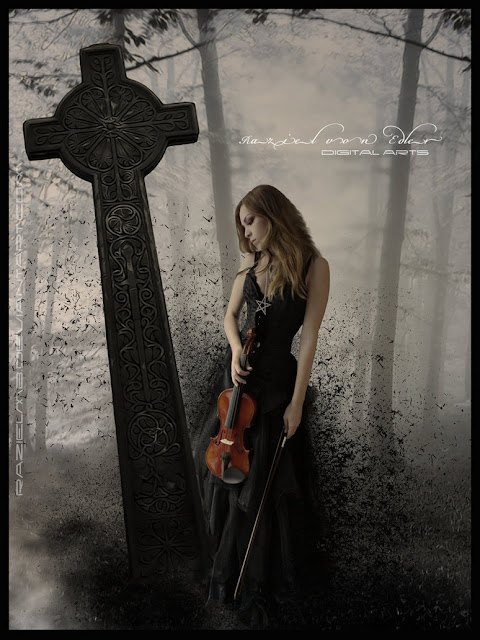The Wolf
The wolf is a common motif in the foundational mythologies and cosmologies of peoples
throughout Eurasia and North America (corresponding to the historical extent of the habitat of the gray wolf). The obvious attribute of the wolf is its nature of a predator, and correspondingly it is strongly associated with danger, destruction, making it the symbol of the warrior on one hand, and that of the devil on the other. The wolf holds great importance in the cultures and religions of the nomadic peoples, both of the Eurasian steppe and of the North American Plains. In many cultures, the identification of the warrior with the wolf (totemism) gave rise to the notion of Lycanthropy, the mythical or ritual identification of man and wolf.
Spirit of the Wolf
by
RayneCrimson
Direct link to artwork
Archetypal Significance of the Wolf
Raven Mother
by
TBirdExperience
Direct link to artwork
People from many cultures and traditions have interpreted the wolf as an instinctive creature. At some point in psychological development, most people struggle with integrating the spiritual and physical aspects of their being. The image of the wolf has been used to represent both aspects. The Chinese saw the wolf as a guardian of the heavenly palace. In Japan the wolf was admired for its ferocity, tenacity and swift attack. Also, they considered the wolf to be from heaven and to be venerated. Early Biblical sources represented the wolf as destructive and associated with the evening and dishonest gain, bloodshed and destruction.
The wolf today still represents our "instinctive nature that is wild and natural".
Estes (1992) suggests that there is a wild and natural creature within every woman, who is filled with good instincts, passionate creativity, and ageless knowing. This wild woman within is seen as an archetype that carries images, ideas, and unique behaviors for humankind. The gifts of wildish nature come to women at birth, but society, in many instances, will attempt to civilize them into rigid roles which will destroy the inner treasure and muffle the deep, life-giving messages of the soul. As a result, women become trapped, over-domesticated, uncreative, and have fearful feelings. For women to find their soul, they will need to face their instinctive wild self so that they can become free, creative, and loving. Estes (1992) illustrated her ideas by telling the story of La Loba, the wolf woman. Her work was collecting bones of wolves and singing life into them. The story symbolizes the soul-voice. It conveys the truth of a woman's power and need to breathe soul over the thing that is ailing or in need of restoration. Women can do it "by descending into the deepest mood of great love and feeling, until one∂s desire for relationship with the wildish Self overflows, then to speak one's soul from that frame of mind" . The wild woman is an archetype that carries images,
ideas, and unique behaviors for humankind that help people to find their soul.
The wolf can be seen as a symbol on an intrapsychic level for individuation. The unique voice of the Self triumphs over the collective norms of society. Individuation suggests a commitment to inner growth and development. Symbolically the wolf appears to represent our instinctive nature that is wild and natural. The wolf can also represent the union of opposites and contradiction. The lone wolf may symbolize the acceptance of natural instincts that had been cut off by family and society and the process of growth and individuation. And the howling wolf illustrates the reclaimed inner voice of the soul.
Cherokee Wisdom: Two Wolves
Two
by Dark-Sheyn
Direct link to artwork
An old Cherokee is teaching his grandson about life.
“A fight is going on inside me,” he said to the boy. “It is a terrible fight and it is between two wolves. One is evil – he is anger, envy, sorrow, regret, greed, arrogance, self-pity, guilt, resentment, inferiority, lies, false pride, superiority, and ego.”
He continued, “The other is good – he is joy, peace, love, hope, serenity, humility, kindness, benevolence, empathy, generosity, truth, compassion, and faith. The same fight is going on inside you – and inside every other person, too.” The grandson thought about it for a minute and then asked his grandfather,
“Which wolf will win?”
The old Cherokee simply replied, “The one you feed.”
References:
Wikipedia
Sandplay Therapists of America
Cherokee Wisdom
Published in DeviantART:
"The Wolf": Art Feature and symbolism by ME. ©RazielMB/Raziel von Edler
Direct link http://razielmb.deviantart.com/journal/The-Wolf-Art-Feature-and-Symbolism-407593523
















































